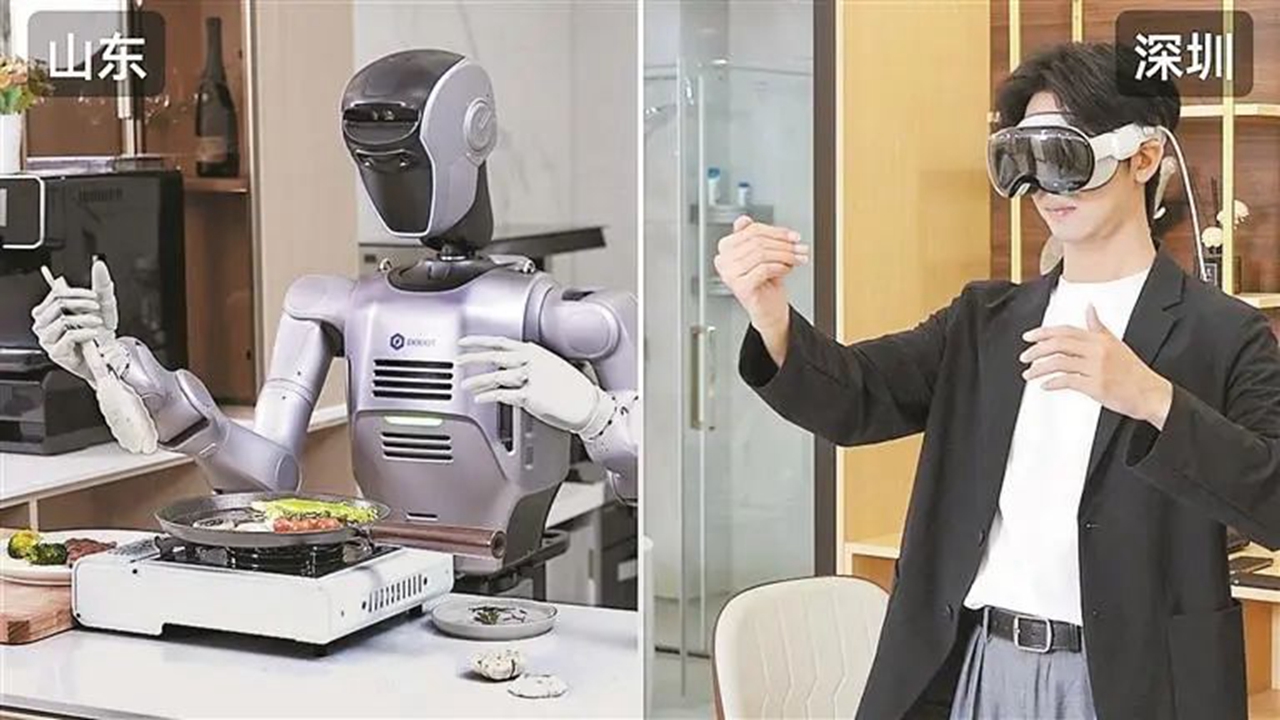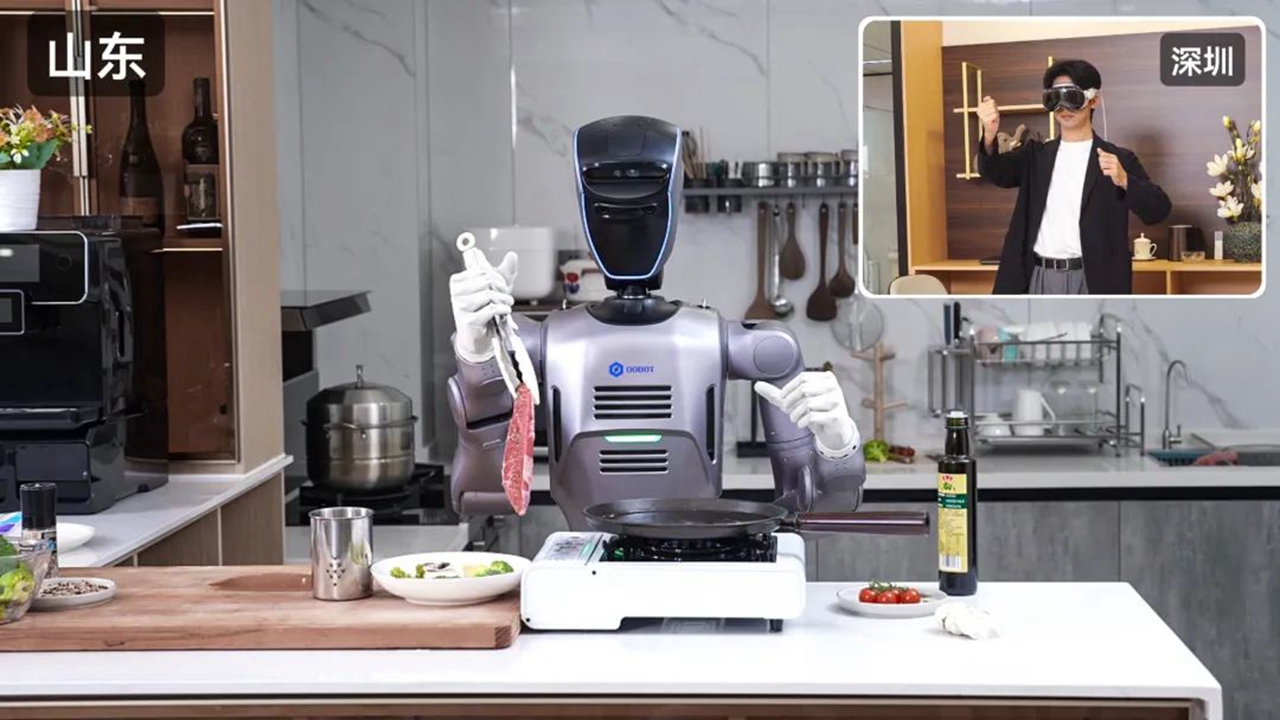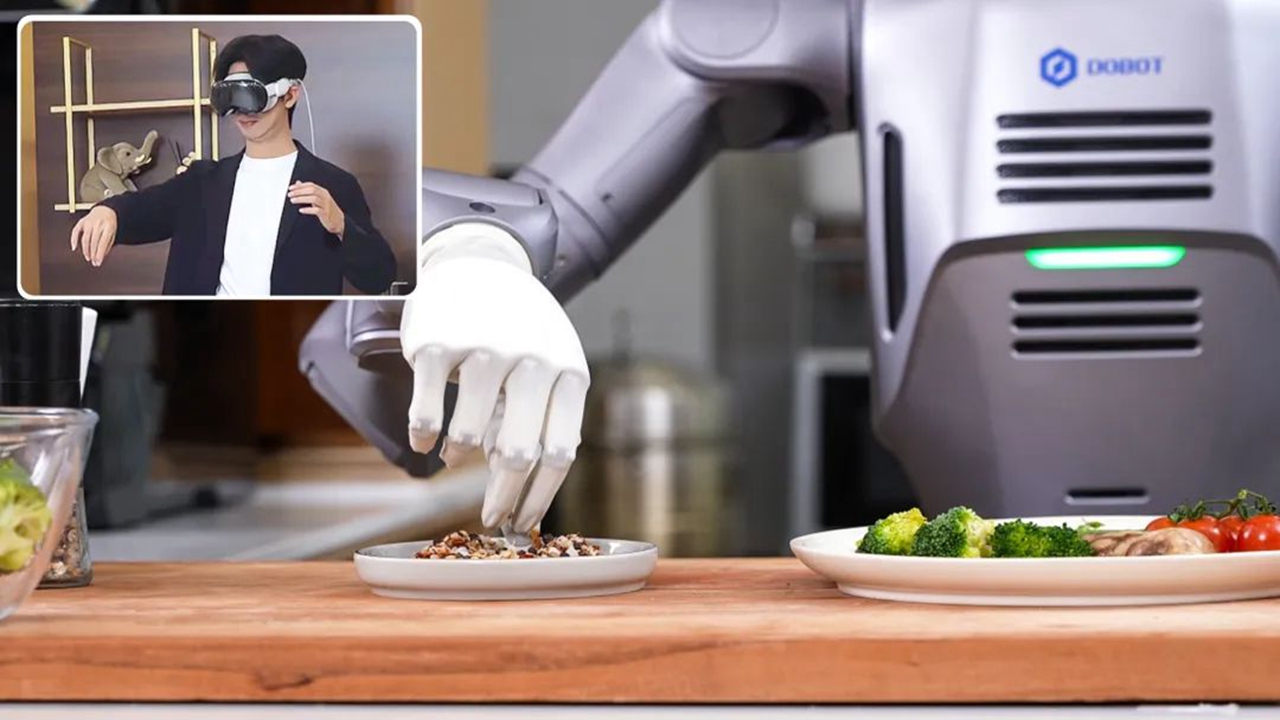Engineer cooks steak with humanoid robot from 1,800 kilometers away
Writer: | Editor: Lin Qiuying | From: Shenzhen Daily | Updated: 2025-07-08
In a futuristic display, an engineer in Shenzhen used a remote-controlled robot to fry a steak 1,800 kilometers away in a home in eastern China's Shandong Province. This scene, part of a demonstration by Shenzhen-based Dobot Robotics, showcased the company's latest breakthrough in humanoid robot remote control technology.
 An engineer in Shenzhen (R) remotely controls the humanoid robot Atom to fry a steak in Shandong using VR goggles and motion sensors, demonstrating Dobot Robotics' latest telexistence technology. Photos courtesy of Dobot Robotics
An engineer in Shenzhen (R) remotely controls the humanoid robot Atom to fry a steak in Shandong using VR goggles and motion sensors, demonstrating Dobot Robotics' latest telexistence technology. Photos courtesy of Dobot Robotics
The engineer, equipped with VR goggles and a control console, remotely performed a series of intricate tasks using Atom, the company's humanoid robot, including opening the refrigerator, retrieving the steak, and frying it.
Every movement of the engineer was captured by a millimeter-precision motion capture system and transmitted via ultra-low latency networks, enabling real-time mapping onto the robot.

In Shandong, Atom picks up a piece of steak and places it into a frying pan — controlled in real time by an engineer located in Shenzhen.
When the engineer used the robot to serve the fried steak to a child, the core value of this technology was revealed — it has the potential to break down spatial barriers through the deep integration of telexistence and telepresence.
Atom's limbs, joints, and fingers can precisely replicate a user's movements, with a spatial trajectory overlap exceeding 99%. Atom, the world's first full-sized humanoid robot with both dexterous manipulation and straight-knee walking, is capable of full-body coordination. Its upper and lower body can work together, naturally moving in tandem like a human.
This full-body coordination capability allows Atom to execute complex tasks — such as frying a steak, which involves multiple steps and continuous adjustments — while being directly operated by a remote engineer. Throughout the process, the robot precisely mirrors the human controller’s movements, maintaining stable spatial positioning accuracy.

A close-up captures the intricate movement of Atom’s fingers, highlighting its precision and dexterity.
Dobot is set to revolutionize multiple sectors by promoting the use of humanoid robots in a variety of areas, including hospitals, disaster relief, family homes, industrial manufacturing, education, and entertainment.
In the medical field, doctors will be able to remotely control robots to perform surgeries. In disaster relief situations, robots can be used to remotely carry out critical tasks in hazardous environments, such as nuclear radiation zones and fire scenes. In family settings, remote-controlled robots could provide assistance to children living away from home, help take care of seniors, or prepare meals for children.
Moreover, this technology is poised to transform other industries. In manufacturing, workers will be able to remotely control robots to repair equipment overseas. In education, teachers can use robots to conduct remote hands-on teaching. Even the entertainment sector could see a shift, with gamers controlling real-world robots for competitive play, bringing virtual gaming into the physical realm.